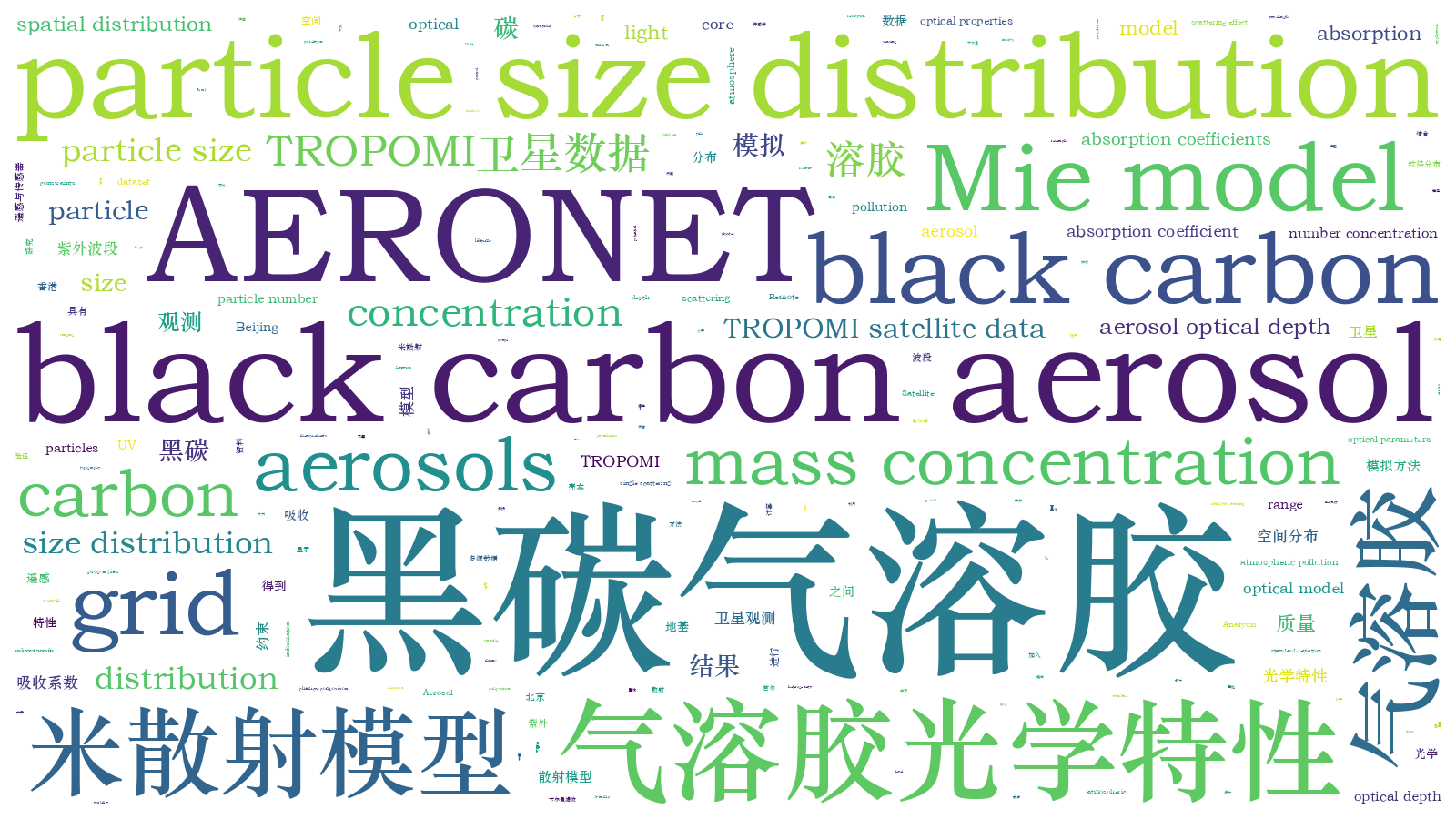卫星和地基遥感观测资料约束下的核-壳态气溶胶光学特性模拟研究
Light-absorbing aerosols have a huge impact on visibility. The atmospheric pollution they cause can pose serious risks to human health. Quantitatively assessing the optical properties and spatiotemporal distribution of light-absorbing aerosols is of vital importance for decision-making in the management and control of complex air pollution. The dynamic changes in the physicochemical properties of light-absorbing aerosols, along with their temporal and spatial heterogeneity, introduce significant uncertainties in simulating their radiative forcing. The challenges arise from difficulties in accurately estimating particle size distribution, chemical composition, and mixed state, impeding precise retrievals through satellite remote sensing, with common model simulations and radiative transfer equations assuming the presence of external mixing for light-absorbing aerosols. However, research indicates that, especially in regions prone to pollution events like East Asia, South Asia, and Southeast Asia, a "core-shell" mixed state, with black carbon as the core and scattering aerosols like sulfates and nitrates as the shell, best represents the prevailing state of light-absorbing aerosols. Rough assumptions about aerosol states not only introduce significant errors in simulating aerosol number and mass concentrations in the atmosphere but also lead to substantial uncertainties in estimating overall radiative forcing.
Data from both satellite and in situ measurements are employed in the present study. First, we employ the AERONET aerosol optical depth (AOD) dataset to identify polluted days at three selected sites, and we match it in space and time with the single scattering albedo (SSA) dataset combined with the TROPOMI ultraviolet (UV) SSA dataset. Second, we utilize the Mie optical model across various combinations of core and shell sizes to establish a preliminary SSA map. Subsequently, we use SSA data from six different wavebands to constrain the SSA output from the Mie model. All calculations are conducted at a daily and grid-level resolution. Upon obtaining probability distributions for core size, shell size, and their corresponding SSA and absorption coefficient (ABS) values, we then apply spatial relationships between the column total absorbing aerosol optical depth (AAOD) from TROPOMI, single-particle absorption, and size distribution. This allows us to assess the column value of black carbon mass concentration and particle number concentration.
Spatial distribution of the mean absorption coefficient obtained from the Mie model simulations during periods of severe pollution shows that the absorption coefficient of the Beijing station is generally higher, with values mainly concentrated between 0.05 and 0.07. This indicates a higher presence of light-absorbing aerosols during this period. For the Hong Kong station, most of the absorption coefficients are below 0.1, with the majority falling below 0.2 and a low standard deviation of less than 0.02. Factors related to topography and wind patterns are the primary reasons for the lower values observed in the Hong Kong station (Fig. 3). After applying spatial relationships between the column total AAOD from TROPOMI, the results show that the particle concentrations in the column at the Beijing station generally fall within the range of 3×1019-5×1019 grid-1. The number concentrations in Hong Kong are relatively lower than those in Beijing. Except for a few grid points where concentrations reach 2.5×1019 grid-1, the overall value range in Hong Kong between 1×1019 and 2×1019 grid-1. For the Seoul station, particle concentration range is from 1.5×1019 to 3.0×1019 grid-1 (Fig. 4). By considering the particle size distribution of black carbon aerosols under the "core-shell" mixed state simulated by the Mie model, the results of the spatial distribution of black carbon aerosol column mass concentration at each grid point (Fig. 6) shows that over 60% of the area of Beijing have concentrations exceeding 500 kg/grid. In the Hong Kong area, apart from certain regions within the Pearl River Delta urban cluster where black carbon column mass exceeds 500 kg/grid, the values in other areas are below 300 kg/grid. In addition, Seoul has an overall column mass concentration of less than 300 kg/grid.
Present study utilizes constrained particle size information and absorption coefficients to calculate the spatial distribution of atmospheric column mass concentration of light-absorbing aerosols and black carbon at various stations. It presents a novel method for simulating the optical parameters of light-absorbing aerosols and the spatial distribution of black carbon aerosol column mass concentration. The simulated black carbon mass concentration results have a good correlation with the Karman Filter emission inventory, with the estimated black carbon lifetime ranging from one to four days, which accords with the existence state of black carbon in the real atmosphere. The calculation results of black carbon mass concentration based on the Mie model proposed in this study are great and have certain application potential in the future. By comparing the model-constrained particle size distribution and absorption coefficient results before and after incorporating TROPOMI UV satellite observational data, it is demonstrated that by incorporating UV wavelength observational data as constraints, compared with results without UV constraints, the outcomes not only encompass the scattering effect of smaller-sized particles on the atmosphere but also calculate the total column mass concentration of aerosols across a broader particle size spectrum. Additionally, this approach covers a wider range of information on the spatial distribution of black carbon mass concentration.
王新莹, 秦凯, Cohen Jason, 王硕. 卫星和地基遥感观测资料约束下的核-壳态气溶胶光学特性模拟研究[J]. 光学学报, 2024, 44(6): 0628002. Xinying Wang, Kai Qin, Cohen Jason, Shuo Wang. Analysis of Core-Shell Mixed Aerosol Optical Properties Constrained by Satellite and Ground-Based Remote Sensing Observations[J]. Acta Optica Sinica, 2024, 44(6): 0628002.







